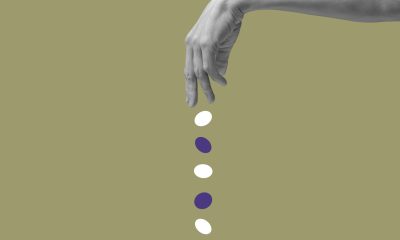Investing
Overnight Success as a Startup Is Unrealistic — Embrace the Uncertainty and Try This Instead.

Entrepreneur
Rome wasn’t built in a day.
Patience is a virtue.
Amazon started as a bookstore in a garage.
You can repeat the adages a thousand times but the message doesn’t really sink in. Entrepreneurs are hardwired to want change and progress. That’s why, despite the odds, we launch businesses and create new products and services. But even if our rational brains tell us that good things take time, the emotional side screams for success overnight. Founders have mass market wishes and unicorn dreams.
It has to do with uncertainty. To be patient in business, we must accept a certain degree of uncertainty — an indeterminate amount of time during which nothing is guaranteed; when we’re working hard, likely giving it our all, and the ROI is unclear.
I launched the first version of Jotform in 2006. It has taken nearly two decades to grow it from one to 660 employees; from zero to 25 million users worldwide. Patience enabled our slow but sustainable growth and momentum. But it has been challenging. In a startup world obsessed with speed, I often had to remind myself of the cold, hard benefits of strategic patience. If you need a reminder today, here are the upsides of a more deliberate pace in business growth.
Related: Patience Is the Secret to Boosting Your Profits
Holding the reins for the long run
In the early aughts, I was living in Brooklyn Heights. At sunrise, I’d head to the local Starbucks and work for a few hours on my startup idea, a drag-and-drop web form company, before clocking a full day in the office in Manhattan. When I finally launched a company of one (me), I had to wear all the hats — product design, UX, marketing, customer service and more. I learned each aspect of the business inside and out — until the hats started wearing me down and I knew it was time to grow the team.
How did I know it was time to hire? When I realized: A) a specialist in a certain role might do the job better than me; and B) we had their entire first-year salary in the bank. But those early days were a crash course in every aspect of business. It wasn’t apparent then, but in hindsight, I can see that it made me a stronger entrepreneur. When it came time to hire, I knew what I was looking for.
I also had full control over our company and the long-term vision. Had I not been a bootstrapper, I would have been under pressure to scale and answer to investors. Growing slowly allowed me to hold fast to my original vision: developing products to make our users’ lives easier, be it an online form or more recent products, like spreadsheet builders or PDF editors.
Again, it wasn’t easy. I had to make sacrifices, like moving back to my native Turkey to keep costs down. But long term, I could maintain full creative control over the company, which is why I became an entrepreneur in the first place.
Fostering creativity and collaboration
The benefits of patient leadership trickle down to teams, in terms of creativity and collaboration. David Sluss, a professor at ESSEC Business School in France, surveyed nearly 600 professionals and found that when leaders demonstrated patience (as reported by employees), self-reported creativity and collaboration increased by an average of 16%. Not only that — productivity rose by 13%.
Stress can be a motivator. Pressure in short sprints, like hack weeks, can lead to bursts of creativity. But leaders who are obsessed with immediate results dampen creativity.
The creative process has two kinds of motivators — extrinsic and intrinsic. As Harvard Business Review notes, the latter is far more essential. So, how can leaders cultivate motivation intrinsically? At Jotform, our teams work in cross-functional teams. Each team is an independent unit. They set their own goals and deadlines. They generate creative projects and solutions they share with colleagues during weekly demo days. While outside motivators inevitably loom — job security, compensation, etc. — allowing teams to pursue their genuine interests, manage deadlines and challenge themselves, creates intrinsic motivation.
For leaders, the key is focusing on the essentials, from KPIs to expenses. Don’t lease the big office with the bells and whistles unless necessary. That way, you give team members the wiggle room to self-direct on the rest.
Related: In the Age of Instant, Here’s Why Leaders Must Learn the Art of Patience
Making employees feel heard
There’s also a strong argument for patience on an interpersonal level. By that, I mean not rushing through interactions, but really paying attention to the people you work with. It takes effort. Echoing the sentiment of David Foster Wallace’s commencement speech, This Is Water, it requires switching off your default setting and being present for people; putting yourself in their shoes. In my experience, this kind of conscious attentiveness is contagious, even in the office. Employees respond to it. They walk away from unrushed conversations feeling heard. They feel valued and as research shows, when employees feel valued, revenues rise.
Being present for people isn’t just about the bottom line. Harkening back to Wallace’s essay, it can alter your everyday life experience for the better. But, it’s also true that slowing down and listening to team members is a form of strategic patience. It requires an upfront investment, but reminding yourself of your end goals — smooth, sustainable growth — will hopefully serve as motivation when your willpower inevitably wanes.
Read the full article here

-

 Side Hustles7 days ago
Side Hustles7 days agoThe Day Trader’s Guide to Making Money Without Tying to a Desk
-

 Side Hustles6 days ago
Side Hustles6 days agoHow Charlotte’s Rally Pickleball Got Its Start
-

 Make Money6 days ago
Make Money6 days ago5 Surprising Ways Trump’s Trade Agenda Could Affect What You Pay at Checkout
-

 Investing6 days ago
Investing6 days agoQuantum stock soars on new file system client By Investing.com
-

 Side Hustles4 days ago
Side Hustles4 days agoKickstart Your Year With These Entrepreneurial Health Checkups
-

 Side Hustles3 days ago
Side Hustles3 days agoExpand Your Global Reach with Access to More Than 150 Languages for Life
-

 Side Hustles2 days ago
Side Hustles2 days agoKFC Announces Saucy, a Chicken Tenders-Focused Spinoff
-

 Investing2 days ago
Investing2 days agoPalantir, Anduril join forces with tech groups to bid for Pentagon contracts, FT reports By Reuters


















